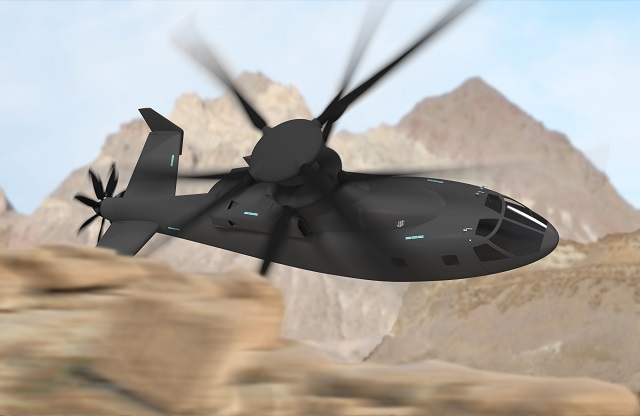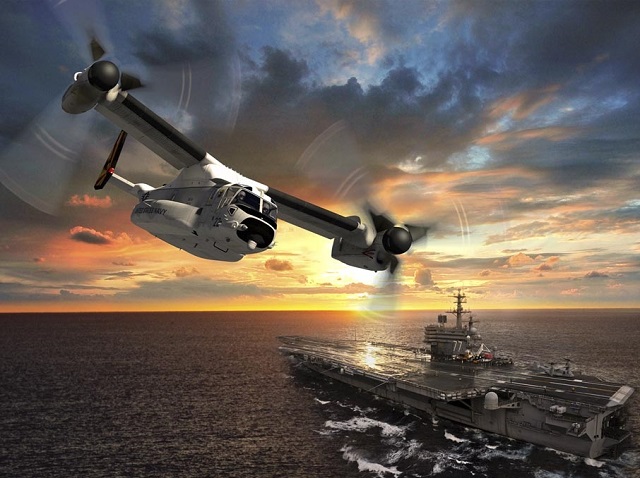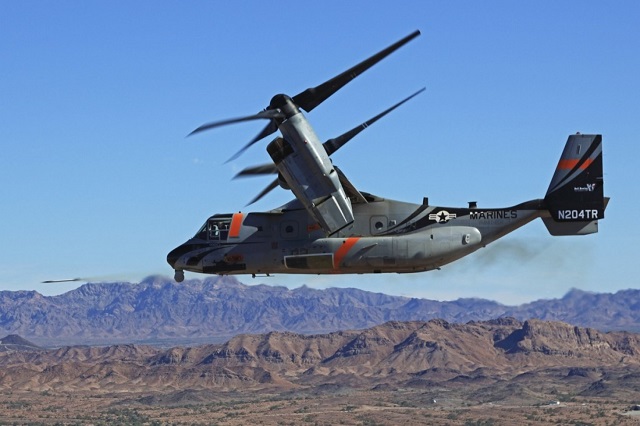Congressional authorisers want the US Army to consider options for accelerating its Future Vertical Lift (FVL) effort and have also told the Air Force to consider buying more Bell-Boeing V-22 Ospreys.
The US House Armed Services panel on tactical air and land forces says in its mark of the fiscal year 2017 defence policy bill that current funding levels for FVL are “inadequate”.
The legislative proposal, which will be considered by the full committee on 27 April, seeks a briefing by the army on its FVL and Joint-MultiRole Technology Demonstrator efforts. That briefing would include a status report on the Bell V-280 Valor and Sikorsky-Boeing SB-1 Defiant programmes as well as an analysis of “potential options and required resources” for accelerating FVL.
Sikorsky-Boeing SB-1 Defiant JMR prototype

Sikorsky
The directive comes as the army seeks approval from the Pentagon to begin a programme of record for Future Vertical Lift, which aims to introduce a next-generation family of rotorcraft with approximately twice the speed and range of today’s types. An analysis of alternatives will begin next year, if approved.
“With the exception of the V-22 Osprey, all US rotorcraft deployed in Iraq and Afghanistan were designed during or before the Vietnam War,” the panel notes. “The committee continues to support the development of future vertical lift aircraft and encourages the department to expand the prototyping programme.”

US Navy will place its first order for CMV-22 variants for the sea-based logistics mission in FY2018
Bell-Boeing
Regarding the V-22, the committee has encouraged the Air Force to consider buying more CV-22Bs and to add those quantities to an upcoming third multi-year procurement starting in fiscal year 2018. The CV-22B variant supports long-range infiltration, exfiltration and resupply of US special forces, but Air Force Special Operations Command has almost received its full allotment of 52 aircraft.
Without another near-term order, though, V-22 production in Philadelphia, Pennsylvania and Amarillo, Texas will dip below its current rate of 24 aircraft per year until V-22 orders from the US Navy (48 units) and Japan (17) enter main assembly around 2019 and 2020.
According to budget documents, the flyaway cost of a V-22 is expected to jump 39% from $71 million now to $99 million by fiscal year 2020 as throughput whittles down.
According to the committee, it would be cheaper to buy CV-22s off the multiyear contract than if the USAF decided to buy a handful later. More orders now would have the added benefit of lowering the unit cost for the other US services and international customers.

70mm Hydra rocket firing in 2014
Bell Helicopter/Textron
The committee also wants V-22 operators to develop a unified plan for arming the Osprey with defensive weapons, like forward-firing, belly-mounted guns, rockets and missiles. In late 2014, Bell-Boeing demonstrated forward firing of the Raytheon BGM-176 Griffin B missile and BAE Systems Advanced Precision Kill Weapon System, which uses 70mm laser-guided “Hydra” rockets. However, weapons integration is lower on US Naval Air Systems Command’s priority list than networking and communications gear, an improved engine inlet filter, ballistic protections, and a probe-and-drogue aerial refuelling system.
“The committee is concerned that given the emerging flexibility the V-22 has exhibited in multiple contingency and training operations, the aircraft may be unintentionally limited by its lack of defensive weapons and having to rely upon other airborne armed assets to provide escort during tactical airlift infiltration and exfiltration operations,” the legislation states.
Source: FlightGlobal.com









































